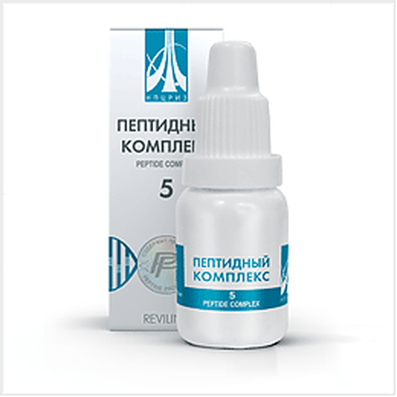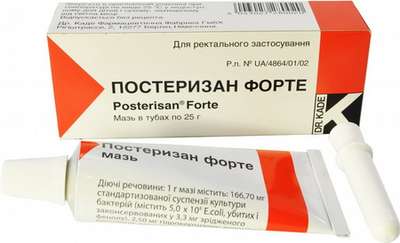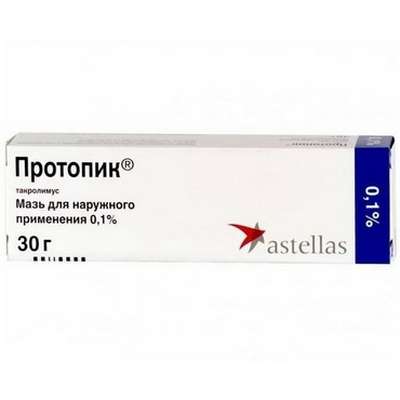Instruction for use: Cynt
I want this, give me price
Dosage form: Coated tablets
Active substance: Moxonidinum
ATX
C02AC05 Moxonidine
Pharmacological group
Hypotensive central agent [I1-imidazoline receptor agonists]
Nosological classification (ICD-10)
I10 Essential (primary) hypertension: hypertension; Arterial hypertension; Arterial hypertension crisis course; Essential Hypertension; Essential hypertension; Essential hypertension; Essential hypertension; Essential hypertension; Primary hypertension; Arterial hypertension, complications of diabetes; The sudden increase in blood pressure; Hypertensive disorders of blood circulation; hypertensive condition; hypertensive crises; arterial Hypertension; malignant Hypertension; Hypertonic disease; hypertensive crises; accelerated hypertension; malignant hypertension; The aggravation of hypertensive disease; Transient hypertension; Isolated systolic hypertension
I15 Secondary hypertension: Arterial hypertension, complications of diabetes; hypertension; The sudden increase in blood pressure; Hypertensive disorders of blood circulation; hypertensive condition; hypertensive crises; hypertension; arterial Hypertension; malignant Hypertension; hypertensive crises; accelerated hypertension; malignant hypertension; The aggravation of hypertensive disease; Transient hypertension; hypertension; Arterial hypertension; Arterial hypertension crisis course; renovascular hypertension; Hypertension symptomatic; Renal hypertension; Renovascular hypertension; renovascular hypertension; Symptomatic hypertension
Composition and release form
Tablets, coated with a coating.
Moxonidine 0.2 mg
Auxiliary substances: lactose monohydrate - 95.8 mg; Povidone 0.7 mg; Crospovidone - 3 mg; Magnesium stearate 0.3 mg
Coating: hypromellose - 1.3 mg; Ethyl cellulose - 1.2 mg; Macrogol 0.25 mg; Talc - 0.9975 mg; Dyes: iron oxide red (E172) - 0.0025 mg; Titanium dioxide (E171) 1.25 mg
In a blister 10 or 14 pieces; In the box 1, 2, 3 or 4 blisters.
Tablets, coated with a coating.
Moxonidine 0.3 mg
Auxiliary substances: lactose monohydrate - 95.7 mg; Povidone 0.7 mg; Crospovidone - 3 mg; Magnesium stearate 0.3 mg
Coating: hypromellose - 1.3 mg; Ethyl cellulose - 1.2 mg; Macrogol 0.25 mg; Talc - 0.975 mg; Dyes: iron oxide red (E172) - 0.025 mg; Titanium dioxide (E171) 1.25 mg
In a blister 10 or 14 pieces; In the box 1, 2, 3 or 4 blisters.
Tablets, coated with a coating.
Moxonidine 0.4 mg
Auxiliary substances: lactose monohydrate - 95.6 mg; Povidone 0.7 mg; Crospovidone - 3 mg; Magnesium stearate 0.3 mg
Coating: hypromellose - 1.3 mg; Ethyl cellulose - 1.2 mg; Macrogol 0.25 mg; Talc - 0.875 mg; Dyes: iron oxide red (E172) - 0.125 mg; Titanium dioxide (E171) 1.25 mg
In a blister 10 or 14 pieces; In the box 1, 2, 3 or 4 blisters.
Description of dosage form
Tablets with a dosage of 0.2 mg: round biconvex tablets, covered with a shell, light pink color, engraved "0.2" on one side.
Tablets with a dosage of 0.3 mg: round biconvex tablets coated with a coat, light red color, engraved "0,3" on one side.
Tablets with a dosage of 0.4 mg: round biconvex tablets, covered with a coating, matte-red color, with engraving "0,4" on one side.
Pharmachologic effect
Mode of action - hypotensive.
Pharmacodynamics
Moxonidine selectively interacts with imidazoline I1 receptors located in the brainstem, which leads to a decrease in sympathetic activity.
Moxonidine has a high affinity for imidazoline I1 receptors and only slightly binds to central α2-adrenergic receptors due to interaction with which dryness in the mouth and sedation are mediated.
Reduces the resistance of tissues to insulin.
Influence on hemodynamics: a decrease in SAD and DAD with a single and prolonged administration of moxonidine is associated with a decrease in the pressor effect of the sympathetic system on peripheral vessels, a decrease in peripheral vascular resistance, while cardiac output and heart rate do not change significantly.
The maximum of the hypotensive effect is achieved approximately 2.5-7 hours after ingestion.
Pharmacokinetics
Absorption - 90%. Cmax in the blood plasma (after taking Table 0.2 mg) is 1.4-3 ng / ml and is reached after 30-180 minutes. Bioavailability - 88%. Eating does not affect the pharmacokinetics of the drug.
The volume of distribution is 1.4-3 l / kg. It penetrates through the BBB. Binding to blood plasma proteins - 7.2%.
The main metabolites: 4,5 dehydroxymidine and guanidine derivatives.
T1 / 2 moxonidine and metabolites is 2.5 and 5 hours, respectively. Within 24 hours more than 90% of moxonidine is excreted by the kidneys, about 78% unchanged and 13% in the form of dehydrogenated moxonidine. Less than 1% of the dose is excreted with feces. Moxonidine does not cumulate with prolonged use.
Pharmacokinetics in old age
There are age-related changes in pharmacokinetics, which are probably due to reduced metabolic activity and / or slightly higher bioavailability of moxonidine in elderly patients. However, these pharmacokinetic differences are not clinically significant.
Pharmacokinetics in renal failure
The excretion of moxonidine is largely correlated with Cl creatinine. In patients with severe renal insufficiency (Cl creatinine <30 ml / min), the equilibrium plasma concentrations and final T1 / 2 are approximately 3 times higher than in persons with normal renal function (Cl creatinine> 90 ml / min). In patients with moderate renal insufficiency of moderate severity (Cl creatinine> 30-60 ml / min), the equilibrium concentrations in the blood plasma and the final half-life are higher than in patients with normal renal function by approximately 80 and 35%, respectively. In both groups, the maximum concentrations of moxonidine in the blood plasma are only 50% higher. The administration of multiple doses of moxonidine does not result in cumulation of the compound in the body of patients with moderate renal insufficiency.
Moxonidine is slightly excreted in hemodialysis.
Indications of Cynt
Arterial hypertension.
Contraindications
Hypersensitivity to the components of the drug;
Syndrome of weakness of the sinus node, pronounced bradycardia, sinoatrial and AV-blockade;
Severe chronic heart failure (stage III-IV), unstable angina;
Severe hepatic impairment;
Age to 18 years (effectiveness and safety not established).
Carefully:
Parkinsonism, epilepsy, depression;
glaucoma;
Intermittent claudication, Raynaud's disease (due to lack of experience);
hemodialysis.
Application in pregnancy and lactation
There are no clinical data on the negative effect on the course of pregnancy. Studies in animals have not revealed a direct or indirect adverse effect on pregnancy, embryonic development, childbirth and postnatal development. However, caution should be exercised when prescribing Cint® to pregnant women. Moxonidine penetrates into breast milk, women during the period of treatment are recommended to stop breastfeeding or to cancel the drug.
Side effects
From the side of the central nervous system: rarely - dizziness, headache, sleep disturbance, increased fatigue; Often - asthenia, drowsiness.
From the cardiovascular system: excessive reduction of blood pressure, orthostatic hypotension.
From the gastrointestinal tract: dry mouth.
Allergic reactions: peripheral edema.
Interaction
There is a mutual enhancement of the action of moxonidine when combined with other antihypertensive agents.
In the appointment of moxonidine with hydrochlorothiazide, glibenclamide or digoxin, there is no pharmacokinetic interaction.
Tricyclic antidepressants may reduce the effectiveness of centrally acting antihypertensive agents.
Moxonidine moderately increases the reduced cognitive ability in patients taking lorazepam.
The administration of moxonidine together with benzodiazepines may be accompanied by an increase in the sedative effect of the latter.
When moxonidine is administered together with moclobemide, pharmacodynamic interaction is absent.
Dosing and Administration
Inside, regardless of food intake.
In most cases, the initial dose of Cinta® is 0.2 mg once a day; The maximum daily dose is 0.6 mg divided into 2 doses.
The maximum single dose is 0.4 mg.
The initial daily dose for patients with renal insufficiency (Cl creatinine - 30-60 ml / min) and patients on hemodialysis - 0.2 mg. The maximum daily dose is 0.4 mg.
Overdose
Symptoms: headache, sedation, drowsiness, excessive decrease in blood pressure, dizziness, general weakness, bradycardia, dry mouth, vomiting, fatigue and stomach pain. Potential short-term increases in blood pressure, tachycardia, and hyperglycemia are also possible.
Treatment: there are no specific antidotes.
In the case of hypotension, the restoration of BCC due to the introduction of fluid and dopamine is recommended.
Bradycardia can be stopped with atropine.
Alpha-adrenoreceptor antagonists can reduce or eliminate paradoxical arterial hypertension in an overdose of moxonidine.
Special instructions
The company has no evidence that Cynt® cannot be used for chronic renal failure (Cl creatinine <30 ml / min, creatinine> 160 μmol / L).
If it is necessary to cancel simultaneously taken beta-blockers and Cynt®, first abolish beta-blockers and only after a few days Cynt®.
It is not recommended to prescribe tricyclic antidepressants simultaneously with moxonidine.
During treatment, regular monitoring of blood pressure, heart rate and ECG is necessary.
Cynt® can be administered with thiazide diuretics, ACE inhibitors and slow calcium channel blockers.
Data on the adverse effects of moxonidine on the ability to drive a car and to control machines and mechanisms are absent. There are reports of drowsiness and dizziness during treatment with moxonidine. This should be taken into account when carrying out the above actions.
Storage conditions of the drug Cynt
At a temperature not exceeding 25 ° C.
Keep out of the reach of children.
The shelf life of the drug Cynt
Tablets, coated with 0.2 mg - 2 years.
Tablets coated with 0.4 mg - 3 years.
Tablets coated with 0.3 mg - 3 years.
Do not use beyond the expiration date printed on the package.

 Cart
Cart





